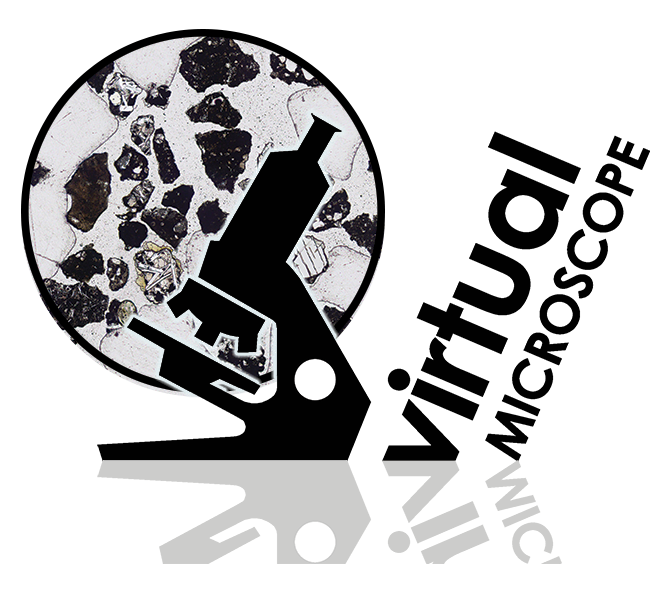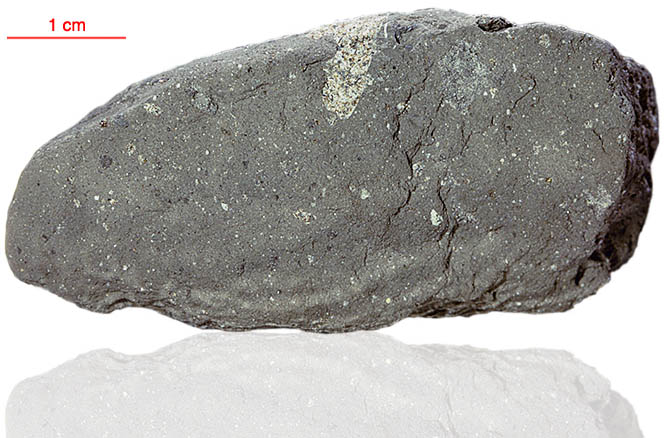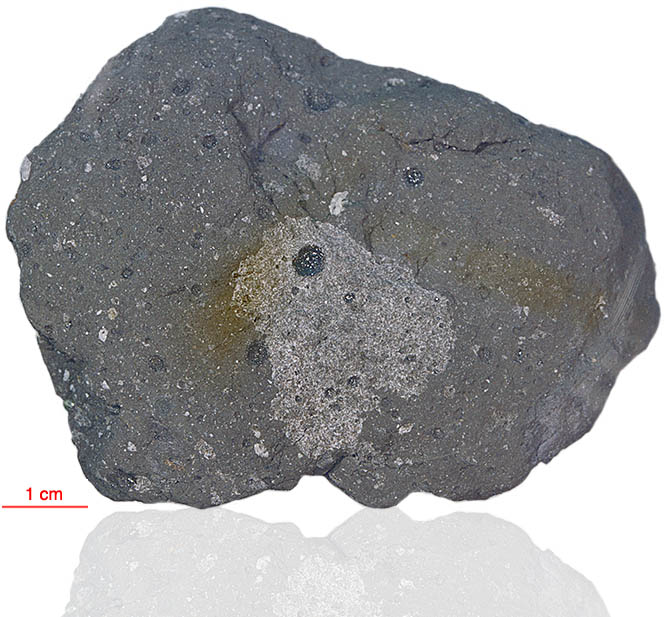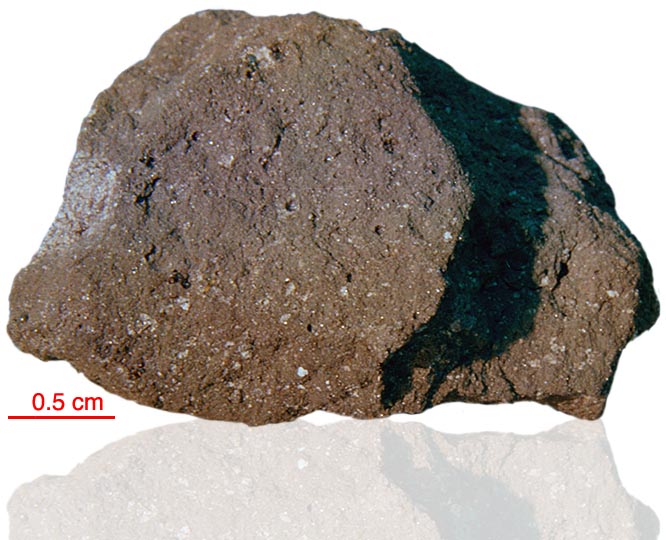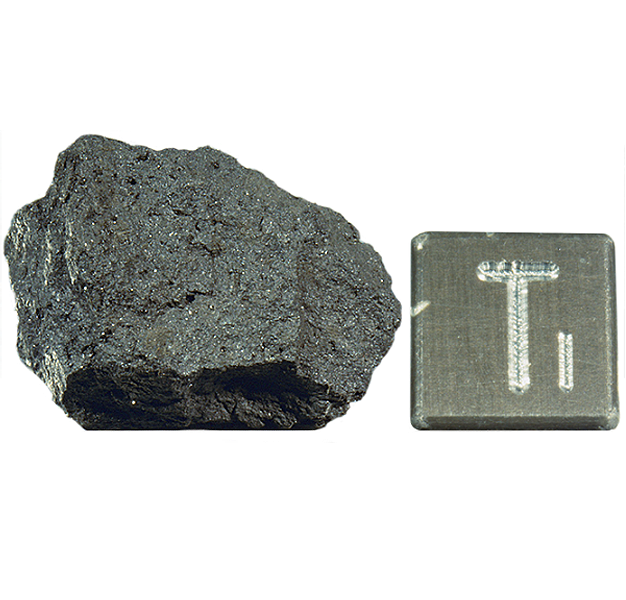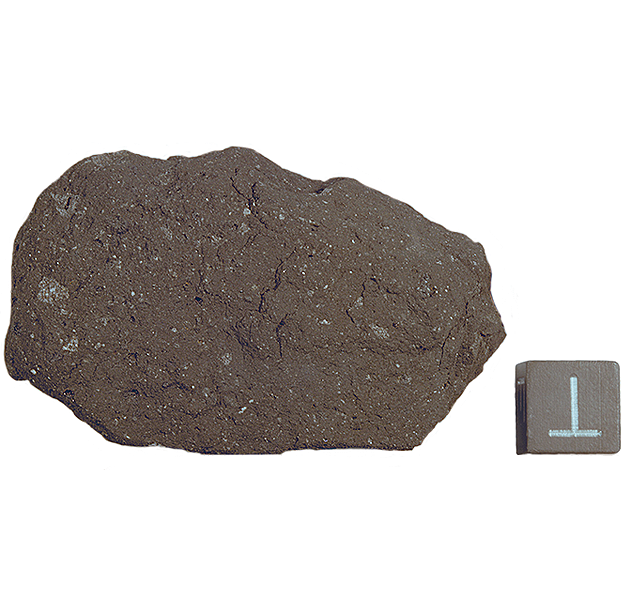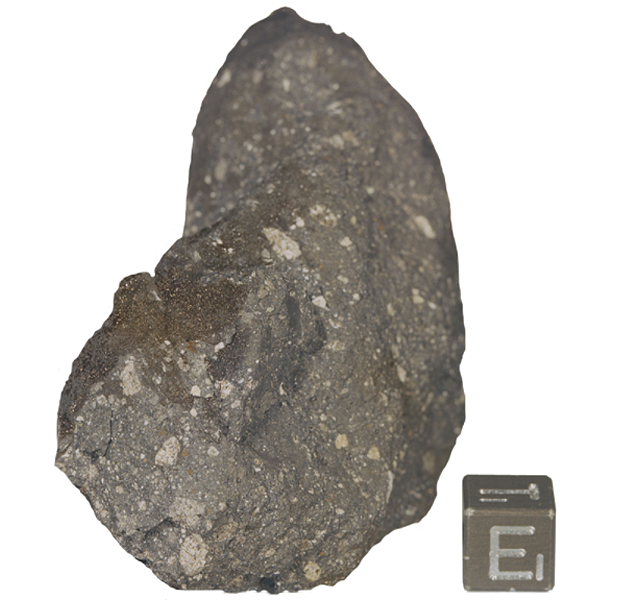
Fact sheet
Sample 10056 is an unusual regolith breccia compared to others that were collected during the Apollo 11 mission to the Moon, consisting of rock and mineral clasts in a fused agglutinate-rich matrix. Agglutinates are small glassy breccias formed when a micrometeorite (a millimetre or less in size) strikes the lunar regolith. Millions of micrometeorites strike the Moon every day. When a micrometeorite strikes the lunar surface, some of the impacted regolith melts, but not completely so the product is a glass with mineral and rock fragments entrained.
In thin section it can be seen that about 10% of the fragments in this rock are basalt, but there are also clasts of anorthosite from the lunar highlands and orange glass droplets. The flowery growths around the sample (particularly visible when viewed between crossed polars) are artifacts in the embedding resin.
Further details of this and other Apollo samples are here: http://curator.jsc.nasa.gov/lunar/
The Apollo 11 samples create an iconic collection since they were the first rocks collected by humankind that were returned to Earth from another solar system body. The Apollo 11 team collected and returned 22 kg of rock and soil samples.
Apollo 11 launched from Cape Kennedy on 16 July 1969. An estimated 530 million people watched Armstrong's televised image and heard his voice describe the event as he took "...one small step for a man, one giant leap for mankind" on 20 July 1969.

